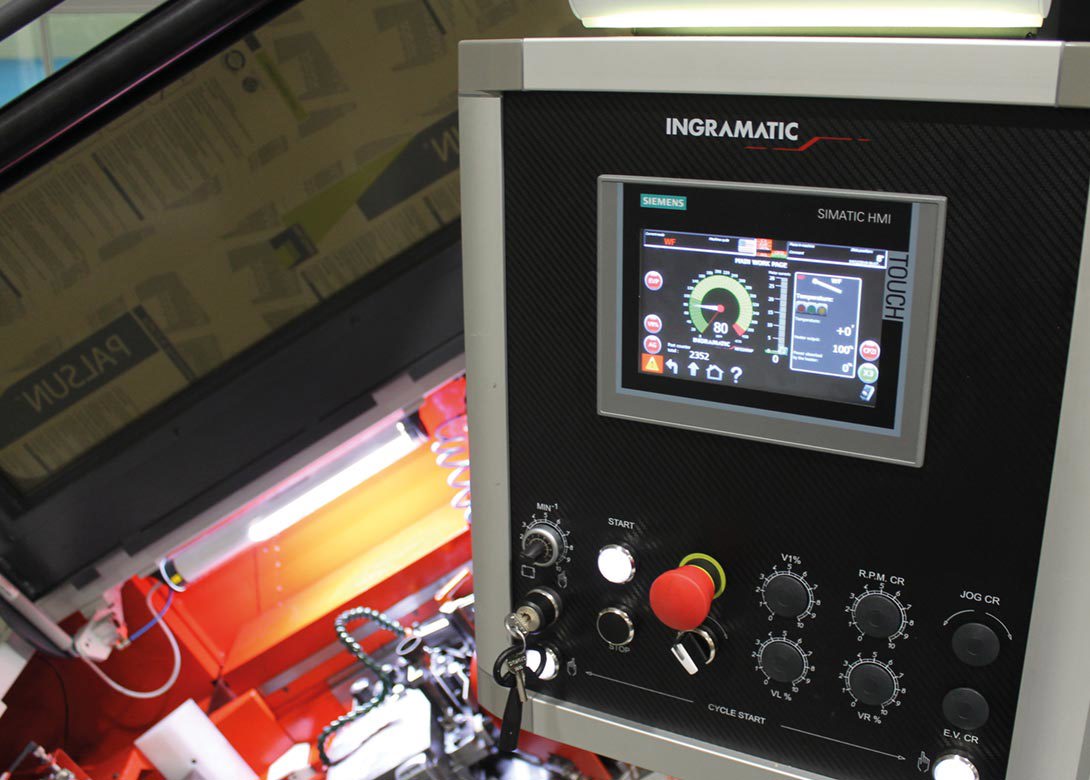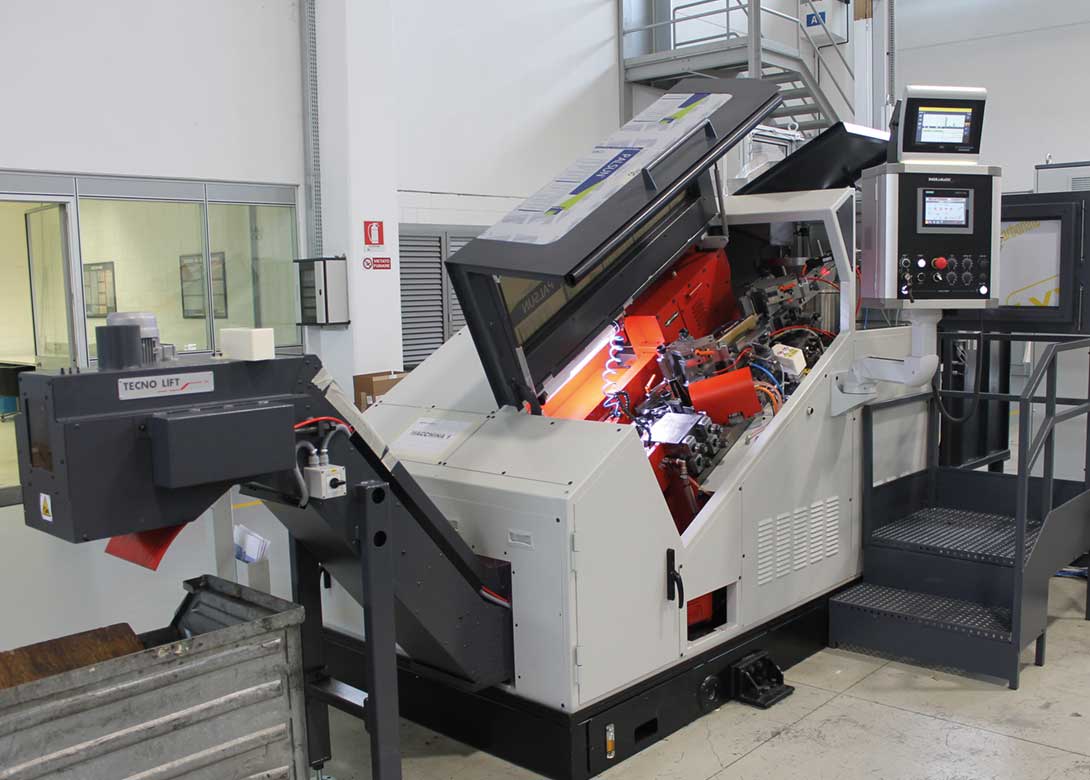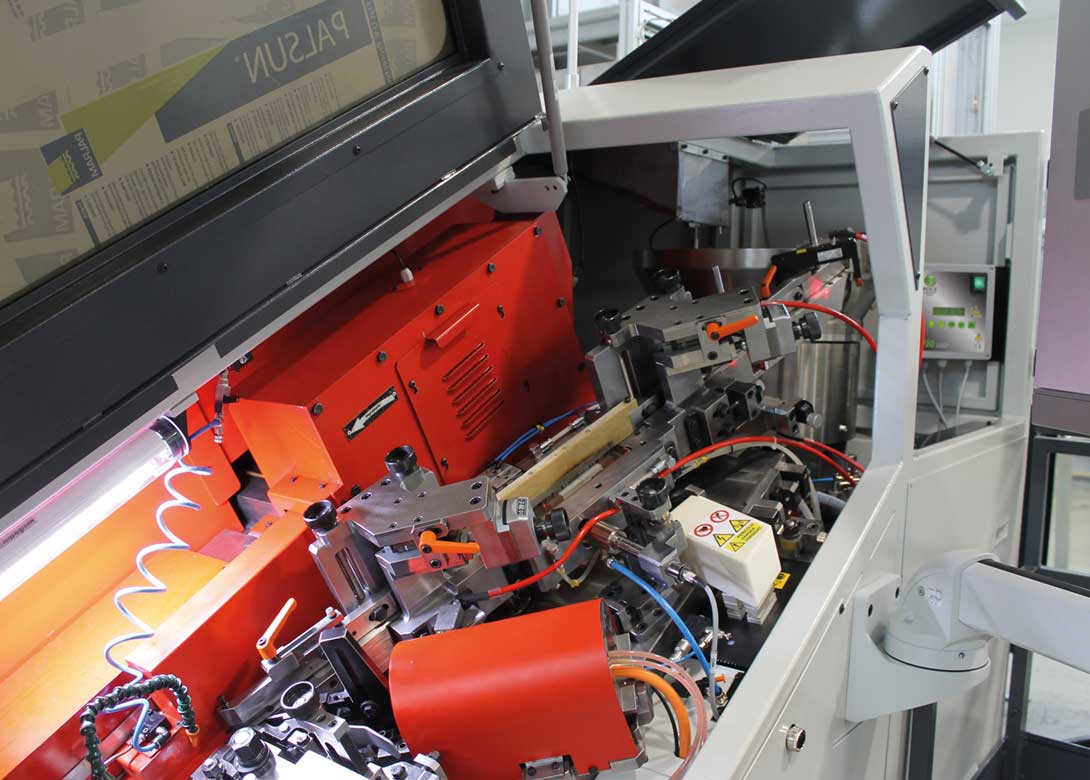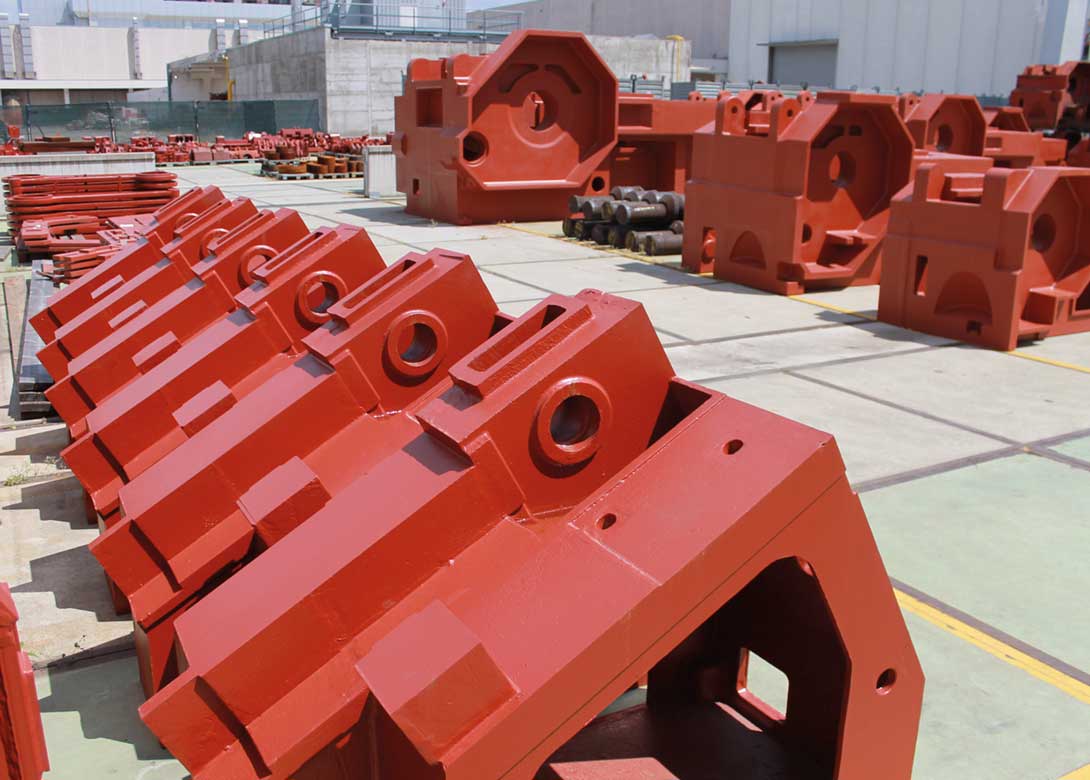
There are a variety of materials that cannot be formed at ambient temperature due to the risk of cracks or abnormal tool wear – causing the production to be unprofitable. However, through the use of induction heaters, capable of warming up parts of screws, it is possible to form such materials – whilst still obtaining the right geometrical quality of the part and ensuring normal tool wear.
Materials such as aeronautic titanium, aluminium alloys series 2000 and 6000, nickel superalloys such as Inconel® or Waspaloy®, stainless steels or 100Cr6 steel are all prime examples of where a heating unit is required. However, this unit still needs to be designed in such a way that the heat from the inductor, the feeding rails, and the tool holder, do not propagate into the machine. Without this, dimensional precision and permanent process temperature control are not possible.
Ingramatic has answered this problem with the latest addition to its RP220 range – the RP220-WF – available in TR1/TR2 sizes or W1015/W10. In the RP220-WF version the stationary tool holder, the feeding rails, and the inductor heater, are chilled in a closed circuit cooling system. For temperature control there is also an optical pyrometer checking the temperature of each part before the threading operation.
Ingramatic points out that the machine combines the heavy-duty design and features of the revolutionary I-Thread, and provides a significant increase in thread quality, productivity and efficiency by rolling all shapes of bolts, screws and parts made of materials difficult to roll.
The machine has many other features including one piece iron casting integrating the contrast block; new feeding rails for the installation of an induction coil with an exclusive design; as well as a generator and a high frequency inverter box.

Other features of the RP220-WF includes a set of selectors that manage the parts at the end of the heating process to ensure they are consistently oriented to the starter unit at the correct temperature. The repeatability of the heating is assured by using a longer induction coil compared to what is currently available on the market. As per SACMA headers, this induction coil design allows quick and easy connection of the coils according to the diameter of screws needed to be warm rolled. Consequently, this warm forming roller provides quick changeover – making it ideal for the small lot sizes in the aerospace fastener market.
As usual for the machines made by SACMA Group, the R&D involved has enabled a fully integrated machine to be developed – both for the hardware equipment and management of the heating unit. For instance, the I-Panel provided by Ingramatic allows the machine to manage the heating unit in automatic mode during the start up of the production but also during the stoppage of the machine.
This means the critical operations normally made by the operators manually are now directly managed by the PLC of the machine. When the machine starts the production, the PLC manages the heating unit until the correct temperature is reached, then starts to feed the starter unit with a precise amount of warmed parts. It is possible to set-up a tolerance for the temperature and reject the parts not at the right temperature.
This helps to ensure the perfect integrity of the threads and also to avoid any damage of the material structure. During the start-up operation, the machine automatically rejects the parts that are not at the right temperature thanks to the optical pyrometer driving directly the rejection device. During production, to manage the quality and the repeatability of the part dimensions, the pyrometer and the load monitor check each part and automatically reject the non-conforming parts without stopping the machine and the heating unit.
Ingramatic explains that for a complete changeover, 30 minutes is necessary and for a changeover consisting only on the part length, 10 minutes is enough. This makes the RP220-WF very competitive for the aerospace market where the production quantities are very low.

This quick changeover is possible because the RP220-WF is part of the I-Thread machine design – the revolutionary line of thread rolling machines emphasised by the following features:
- Quick set-up: All adjustments fully motorised.
- Rigid: The exclusive new design one piece iron casting has been optimised by using FEM software with a ‘C’ shaped stiffener, specifically designed to counter the stresses caused by thread rolling of heat treated parts and special profiles.
- User-friendly/ergonomic: I-Panel touch screen controls with all WF functions integrated in a page dedicated to the warm forming unit. Constant control is possible thanks to the main page showing the real temperature and the kW necessary to warm the parts. Values in mm and inch are available.
- Flexibility: Single starter unit driven by a direct drive motor with the self learning adjustment of the starter finger stroke.
- Simple to use: For the operators, the electronic handwheel can be used for all machine adjustments eliminating the use of hand tools.
- High-speed and reliability: Thanks to the precision of the starter unit, the unique design of the feeding rails and the square design of the frame.
Regarding the spare parts and service, Ingramatic uses the same components as SACMA. This guarantees the immediate availability of spare parts ensuring the best service for customers and enabling Ingramatic to provide a tested and approved complete machine.
Already leading the market of headers made for exotic materials, SACMA Group completes its whole range of machines with this new WF line and is now able to provide any kind of machinery for the aerospace market, as well as other industries using special materials for making screws and bolts. The Ingramatic and SACMA warm forming machines can also be used in cold forming mode making them flexible and competitive to guarantee payback.


Biog
Having spent a decade in the fastener industry experiencing every facet – from steel mills, fastener manufacturers, wholesalers, distributors, as well as machinery builders and plating + coating companies, Claire has developed an in-depth knowledge of all things fasteners.
Alongside visiting numerous companies, exhibitions and conferences around the world, Claire has also interviewed high profile figures – focusing on key topics impacting the sector and making sure readers stay up to date with the latest developments within the industry.








